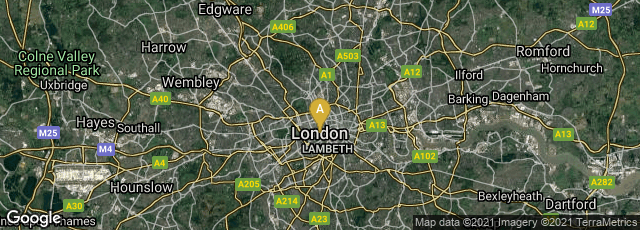

A: London, England, United Kingdom
The collection, recording, and publishing of medical statistics in the form of Bills of Mortality began in England as a result of the epidemic of plague in 1592-93.
"The epidemic of plague, which reached its height in the year 1593, began to be felt in London in the autumn of 1592, and is said to have caused 2000 deaths before the end of the year. On the 7th September, soldiers from the north on their way to Southampton to embark for foreign parts had to pass round London 'to avoid the infection which is much spread abroad' in the city. On the 16th September, the spoil of a great Spanish carrack at Dartmouth could be brough no farther than Greenwich, on account of the contagion in London; no one to go from London to Dartmouth to buy the goods. It was an ominous sign that the infection lasted through the winter; even in mid winter people were leaving London: 'the plague is so sore that none of worth stay about these places.' On the 6th April 1593, one William Cecil who had been kept in the Fleet prison by the queen's command, writes that 'the place where he lies is a congregation of the unwholesome smells of the town, and season contagious, so many have died of the plague.' From a memorial of 1595, it appears that the neighbourhood of Fleet Ditch had been the most infected part of the whole city and liberties in 1593; 'in the last great plague more died about there than in three parishes besides.' The epidemic does not appear to have reached its height until summer. . . .
"Of that London epidemic a weekly record was kept by the Company of Parish Clerks, and published by them beginning with the weekly bill of 21st December, 1592. The clerk of the Company of Parish Clerks, writing in 1665, had the annual bill for 1593 before him, with the plague-deaths and other deaths in each of 109 parishes in alphabetical order, and the christenings as well. For the next two years, 1594 and 1595, he appears to have had before him not only the annual bills but also a complete set of the weekly bills of burials and christenings according to parishes. The same documents were used by Graunt in 1662, and had doubtless been used by John Stow at the time when they were published. The originals are all lost, and only a few totals extracted from them remain on record. . . .
"The London plague of 1592-93 called forth two known publications, an anonymous 'Good Councell against the Plague, showing sundry preservatives. . . to avoyde the infection lately begun in some places of this Cittie' (London, 1592), and the Defensative' of Simon Kellwaye (April, 1593). The dates of these two books show that the alarm had really begun in the end of 1592 and the early months of 1593" (Creighton, A History of Epidemics in Britain[1891] 352-53).
The earliest surviving copy of the Bills of Mortality is:
True bill of the vvhole number that hath died At London: printed by I.R[oberts]. for Iohn Trundle, and are to be sold at his shop in Barbican, neere Long lane end, [1603]
1 sheet ([1] p.) ;c1⁰. STC (2nd ed.), 16743 1-3.